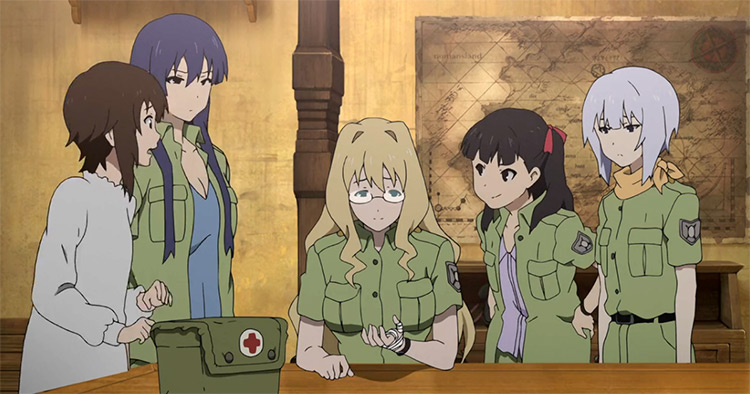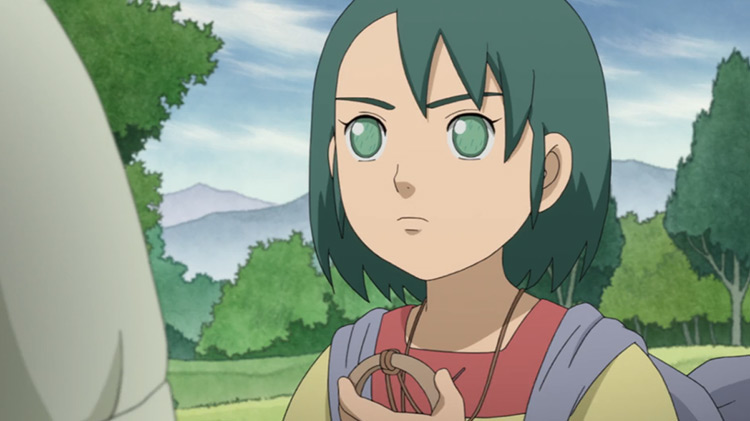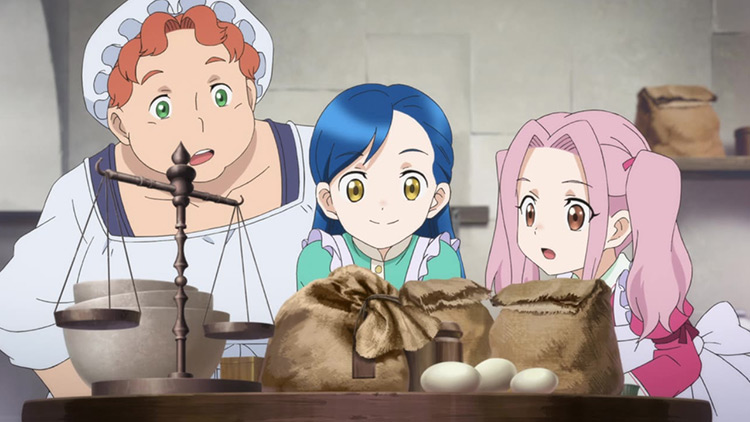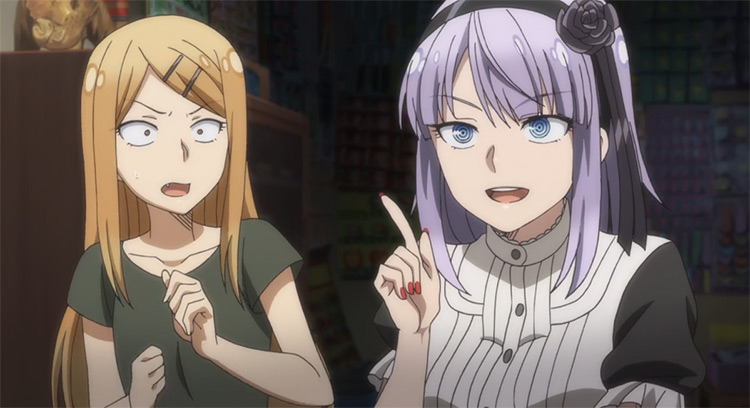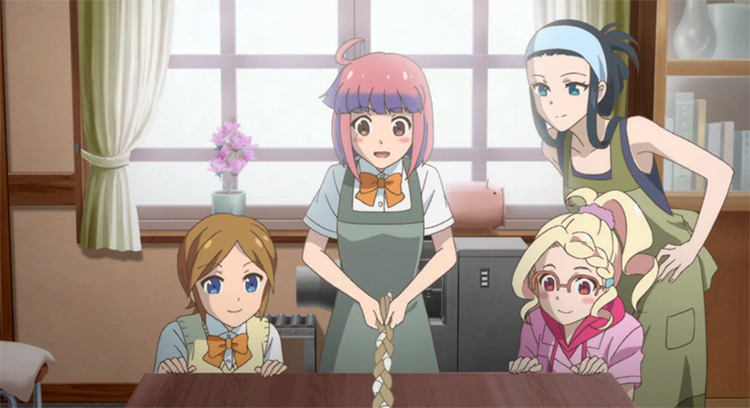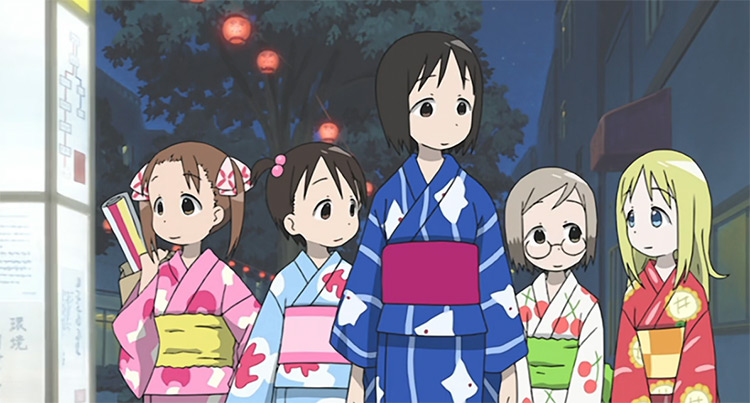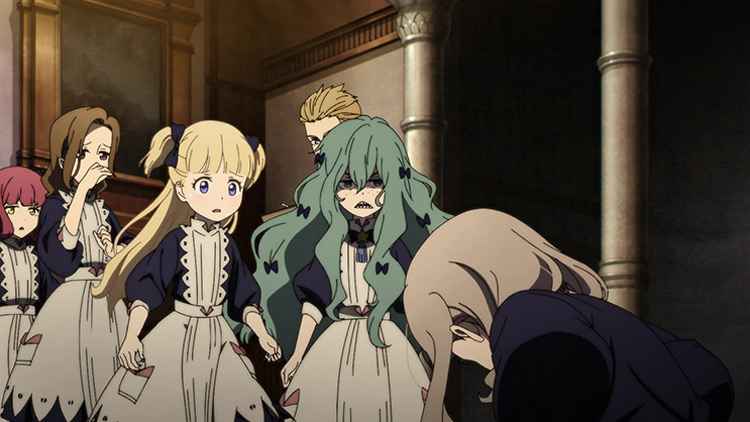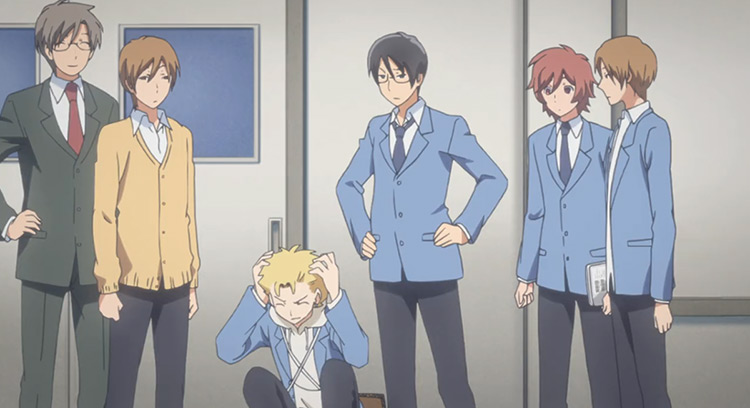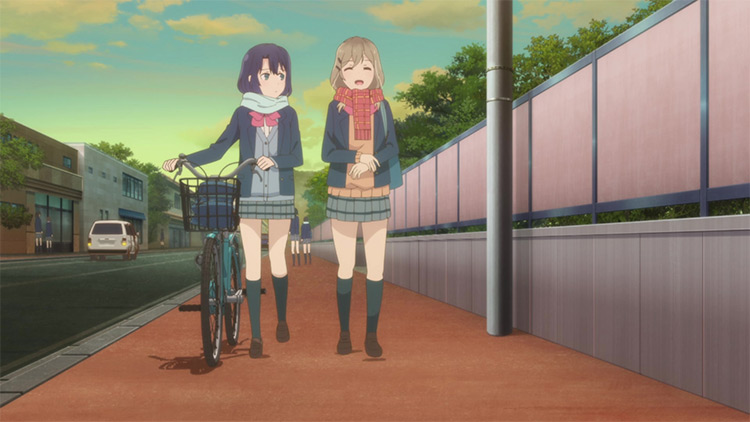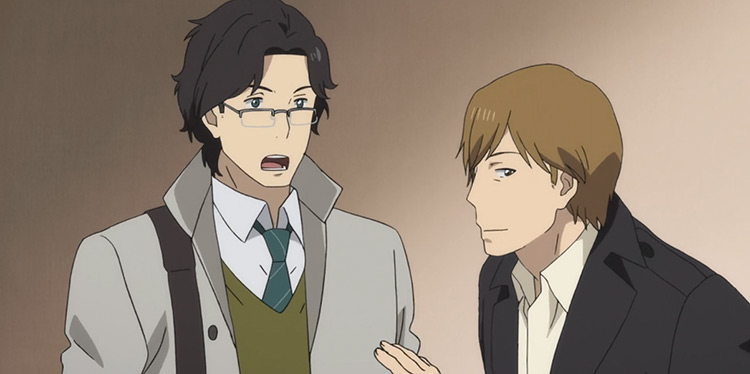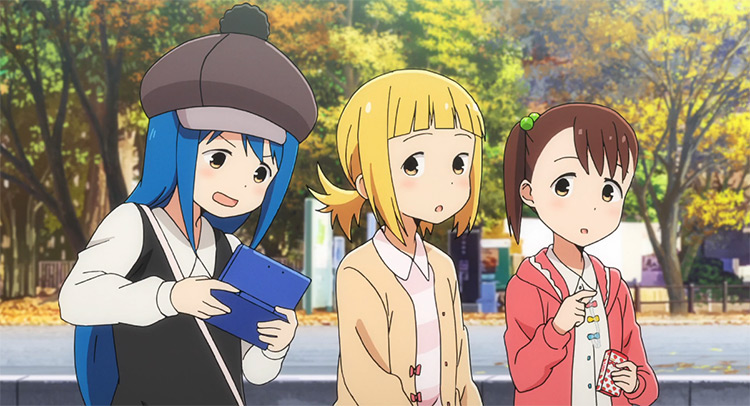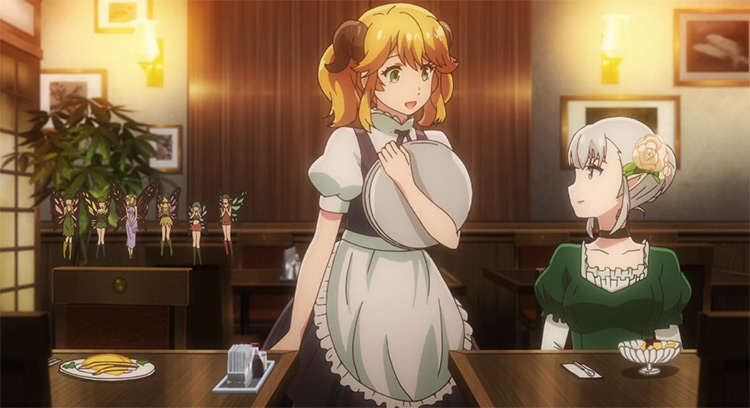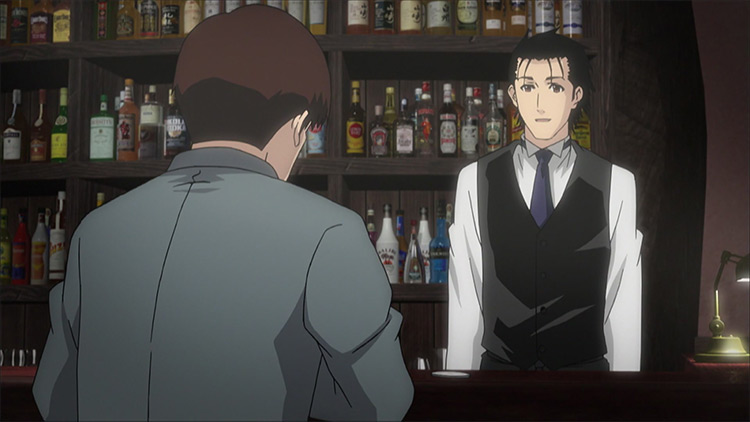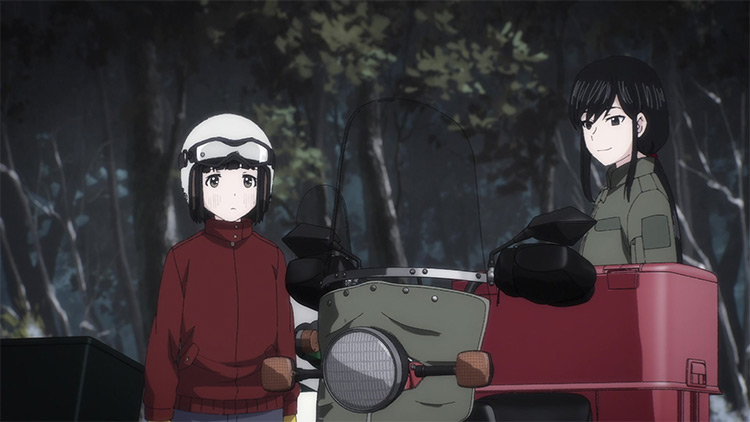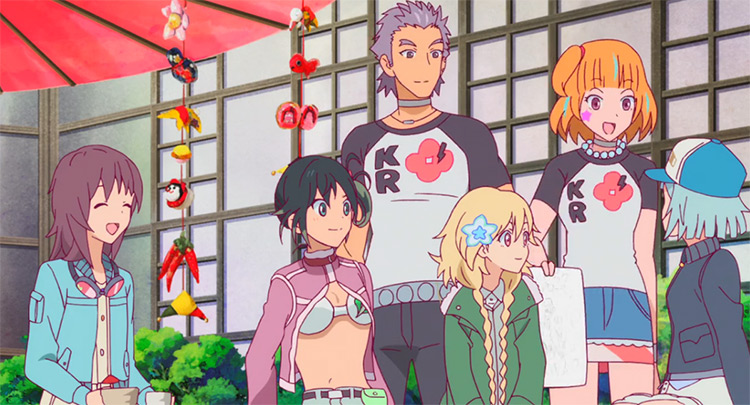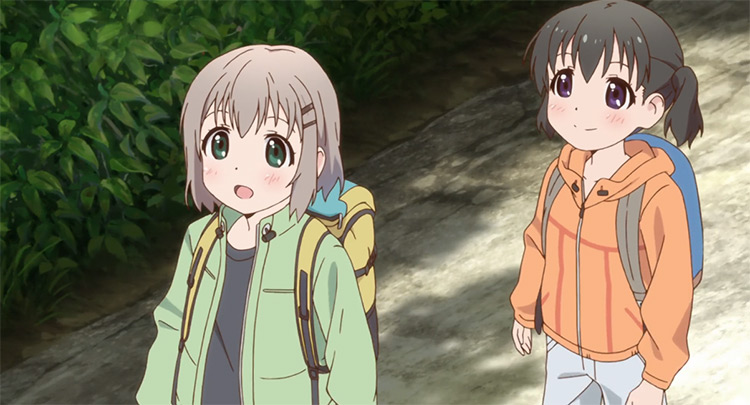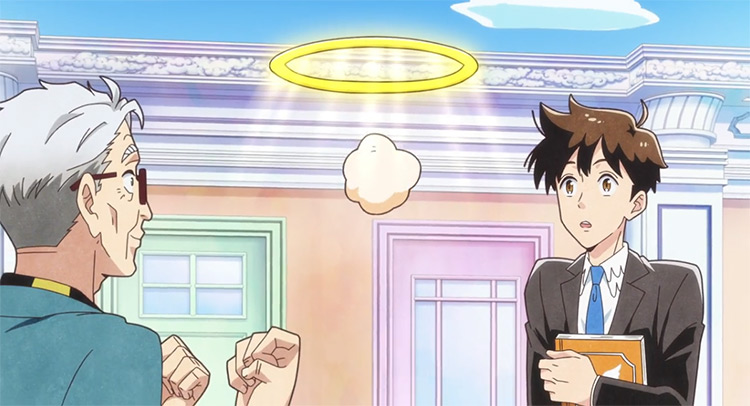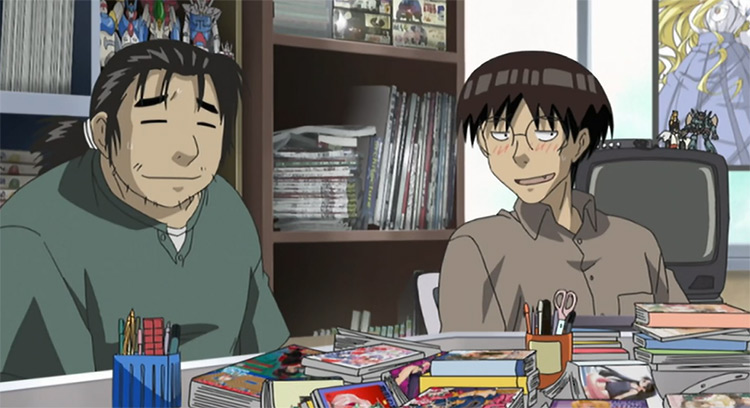But what about other titles in this genre that never had the same degree of acclaim? I’ve seen interesting series become forgotten by the next anime season. Some only received a positive but still lukewarm response, when they deserved far more praise (and viewers). This ranking is one way to recognize all the other commendable slice-of-life shows, so that they’re never lost in the ever-expanding sea of anime.
20. Sound of the Sky
As of this writing, So Ra No Wo To has an aggregate score on some anime websites that makes it look only like an above-average series. Yet the truth is that it’s one of the best shows of 2010 — and it’s one of the most memorable originals of the past decade. A-1 Pictures built a competent team to produce this one-of-a-kind slice-of-life project. This involves moe-style girls, but the similarities to CGDCT anime stops here. So Ra No Wo To quickly sets itself apart with themes of music, warfare, and how a community continues their way of life and fosters their cultural and social bonds – even when the rest of the world is heading toward destruction. Many people have discovered its amazing soundtrack online over the years. And I hope this encourages more to watch the show. Several solemn sequences and musical performances tug at the heartstrings, and it’s made me reflect on real-world troubles and the complexity and fragility of life.
19. Erin
Kemono no Souja Erin is only a year older than Sound of the Sky. Yet somehow, it already seems as if no one remembers it – at least not with fond memories. This is a children’s show that’s honestly too good for adults to ignore. Sure, the fantasy and adventure throughout 50 episodes will appeal to young viewers. But Erin also has so much to offer to more mature folks. You’ll love the incredible growth of 10-year-old Erin. She appears as this innocent child with green eyes whose life takes an abrupt turn for the worse when her mom, the village healer of war-lizards called Touda, meets her undeserved demise. Erin is forced to forge a new path in life. And you’ll witness her mature into a strong yet kind woman. The weaving of dozens of narrative threads and its explorations of political conflict, family, faith, and other themes make it a more complex & accomplished series than most anime shows geared toward adults.
18. Ascendance of a Bookworm
If other isekai titles are driven by the usual goals of defeating the evil boss and becoming an OP hero, then Ascendance of a bookworm has a more laid-back story. Think of this as an isekai for book lovers, and for those who yearn for a less stressful and chaotic life. Originally, the MC was named Urano Motosu. She was a 22-year-old bookworm who had just achieved her goal of becoming a librarian. Sadly, she died because an earthquake caused lots of books to fall on her. Before she had her last breath, Urano hoped to still be able to enjoy reading in her next life. Her wish was granted, but she’s now a small sickly girl named Myne, living in a medieval world where magic exists. Furthermore, books are harder to acquire now – especially because of her socioeconomic status. But Myne won’t stop at anything to restart her bookworm life. And as she does so, this blue-haired youngster slowly adjusts to her new home and becomes acquainted with all sorts of fascinating individuals. I had never heard of Studio Ajia-Do prior to this series. Now I’m eager to see how the studio handles the third season.
17. Dagashi Kashi
There was a relatively decent degree of hype surrounding Dagashi Kashi when it was announced. This was mainly because of the female MC’s character design, particularly her expressions, eyes, and outfit. But Dagashi Kashi didn’t exist for the sole purpose of making Hotaru Shidare the new best girl of the season. If you’ve seen Non Non Biyori, you know that Renge loves visiting the candy store (or dagashiya) managed by Kaede Kagayama, who she adorably refers to as “Dagashi-ya” too. These traditional Japanese candy stores and their cheap yet tasty sweets are recognized and celebrated in this series through Hotaru. She loves dagashi and knows all about its history. And because she wants You Shikada to work for her, she’s on a mission to convince You’s son (Kokonotso) to inherit the historic family dagashiya from him. Thus, this anime is about the socio-cultural significance of dagashiya and dagashi. These stores are fast disappearing in modern Japan. So it’s really nice for Dagashi Kashi to remind people today why Japanese children loved going to them decades ago.
16. Let’s Make a Mug Too
In Spring 2021, I was looking for a new lighthearted show to fill the hole in my heart as both Yuru Camp and Non Non Biyori aired their last episodes — and this is how I chanced upon Yaku nara Mug Cup mo. It’s nowhere near the aforementioned iyashikei favorites in terms of art, animation, composition, and scriptwriting – but it’s also not mere fodder. Let’s Make a Mug Too is about Himeno Toyokawa moving to Tajimi City, which is known for its history of pottery. Here she joins the Pottery Club and learns about the creative (and at times challenging) art of crafting ceramics. So if you’re interested in learning the basics and diversity of pottery, check this one out. The second season released in late 2021, and episodes in each season have companion episodes featuring the four main voice actresses touring Tajimi City. If you watch both the anime and the extras, you’ll appreciate the series more – particularly in how it strives to promote the city.
15. Strawberry Marshmallow
One of the most memorable slice-of-life 4-koma manga from the early 2000s is Ichigo Mashimaro. This 2005 TV anime adaptation manages to translate its effortless charm into a medium with movement and sound (and full colors). This is a CGDCT featuring five girls between 11 and 12 years old, except for Chika’s big sis, the 20-year-old Nobue Itou. Why is she part of the group, you ask? Well, partly because Nobue also loves CGDCT. Yes, this cigarette-smoking nee-chan is a CGCCT fan living in a CGDCT series. That’s the equivalent of a guy getting transported into the anime where his best girl exists. And speaking of living in the world of Strawberry Marshmallow, I love that the background characters are properly drawn instead of being mere shadows or blank figures. Similarly, the MCs don’t wear the same clothes all the time, which is rare in anime. Even if the mundane events feel pretty standard to your slice-of-life series, the execution here makes them worth watching. The girls have solid chemistry, the voice acting is laudable, and the series has some of the best comedic timing out there.
14. Shadows House
I was a skeptic of Shadows House when I first saw the teaser photos and preview videos. Even after the first few episodes, I wasn’t convinced I was going to remember this particularly well once Spring 2021 was done. But The Debut Arc changed my perception — and it was all uphill from there. If you love the architectural style and fashion sense of the Victorian era, you’ll like this series a lot. The music helps sustain the creepy atmosphere, and this really is a show with so many interesting characters. And I don’t say that just because of the outstanding character design. Emilico, Kate, Shaun, Ricky, and the rest of them in the manor are interesting individuals on their own. But when major events force them to come together (or go against each other), episodes become more engaging, and you find yourself rooting for their safety and victory, or both. Who knew a dark (literally and figuratively) slice-of-life anime can be this good? The second season released in Summer 2022 so definitely give this CloverWorks series a try.
13. You and Me.
CGDCT slice-of-life anime are more numerous and usually better received by viewers. But the guys of Kimi to Boku deserve a chance to prove that cute boys doing cute things (or slice-of-life stuff) are also worth watching. Like beloved CGDCT titles such as K-On! and Non Non Biyori, you’ll notice that You and Me. features a group of friends who regularly spend time together – and talk about everything under the sun. There’s no unnecessary drama or conflict. As a slice-of-life anime, it portrays these male friendships with a simple yet comforting visual palette. They tease each other, offer support, and ultimately create memories they’ll cherish even when they graduate and lead wholly different lives. And did I forget to mention that each MC has a cat equivalent? That alone is a remarkable selling point.
12. Adachi and Shimamura
Adachi to Shimamura is a slice-of-life that adds romance and girls’ love elements. Tezuka Productions did a splendid job of illustrating the tumultuous period of adolescence experienced by two female teenagers. Sakura Adachi and Hougetsu Shimamura meet, become friends, and eventually ponder about the true nature of their relationship. Are they just close friends? Or is one (or both) of them hoping for something more romantic? Others complained of the slow pace of Adachi and Shimamura, but I reckon that it’s par for the course in slice-of-life and romance anime. Plus, the show provides viewers with both of their perspectives. Episodes and sequences where the two girls barely move or change locations turn out to be significant when you hear their thought processes and inner voice. This GL slice-of-life series is decidedly intimate and vulnerable in its storytelling. It’s one of the most honest and true-to-life series in how it captures the apprehension and competing thoughts that appear right as someone is expected to respond – especially when they’re with the person they care for.
11. The Great Passage
Just like Honzuki no Gekokujou, Fune wo Amu has an MC whose life is characterized by an obsession with the written word. But Mitsuya Majime isn’t a bookworm in a fantasy world. He’s a bookworm in the real world, a salesman for Genbu Publishing who doesn’t really like his job and has great trouble socializing with others. His life gradually changes for the better once he moves to the Dictionary Editorial Department. He meets Kouhei Araki, an old man passionate about dictionaries. He’s about to retire, but he first needs to find someone capable of taking over The Great Passage from him – a highly ambitious project involving the creation of a new comprehensive dictionary that will take years to complete. As luck would have it, Mitsuya is quite the genius when it comes to words and explaining their meanings. If you liked the anime, I would also highly suggest watching the critically acclaimed live-action movie adaptation too.
10. Mitsuboshi Colors
Mitsuboshi Colors is a sweet slice-of-life series that proves the need for more grade-schooler MCs. Sure, high school is an eventful part of life that’s fun to reminisce on. But the same can be said for when you were much younger and didn’t have to worry about puberty or prom. Yui Akamatsu, Sacchan, and Kotoha are the three members of Colors, a group made to safeguard Ueno District from any form of harm. Of course, the trio doesn’t really deter actual crimes. Instead, Mitsuboshi Colors is about their imagined scenarios of fighting evildoers and saving everyone as they go about the city. To ensure that they don’t run out of things to do, the old man Daigorou Kujiraoka provides them with all sorts of “valuable” information and nifty trinkets. I remember admiring the crisp backgrounds and childlike humor of the manga series when I read it years before the adaptation was announced. Thankfully the anime does it justice. This could be the next big CGDCT if it gets a second season with even better production values.
9. Hakumei and Mikochi
Strangely, this didn’t skyrocket in popularity among the slice-of-life and iyashikei crowd. The first visual teaser and story details should’ve enticed many fans of titles like Mushishi and Non Non Biyori to eagerly catch each weekly episode in 2018. As the title suggests, this is the story of Hakumei and Mikochi – two small friends (merely several inches in height) who live together in a lovely wooden house in the forest. They sometimes differ in interests and demeanor — one loves carpentry, the other love tailoring— but they complement one another and enjoy their daily lives – whether they’re going to the market, meeting new entities and other short people, or just working hard. With its storybook-esque atmosphere, Hakumei to Mikochi never fails to calm the weary mind.
8. Restaurant to Another World
If you love food in anime but you’re not interested in suggestive reaction faces like in Food Wars or Koufuku Graffiti, add this series to your watchlist. First, Restaurant to Another World is a welcome and unique addition to the oversaturated isekai genre. It highlights the mouth-watering taste, smell, and presentation of otherwise ordinary food from the human world by showcasing them to the different creatures and characters you’d expect in standard fantasy titles. Here you’ll find wizards, dragons, elves, and reptilian warriors relishing their first bite of fried shrimp, chocolate parfait, tofu steak, and chicken curry. In addition, the whimsical instrumentals contribute to the relaxing atmosphere. Restaurant to Another World changed studios for its second season (from Silver Link to OLM). But both seasons are unmistakably soothing and highly underrated.
7. Bartender
Sometimes a drink is all you need to relax your senses after a rough day at work or university. Bartender is all about catering to both patrons and viewers, and ensuring everyone leaves the bar feeling much better. But how do you end up in Ryuu Sasakura’s bar Eden Hall? Well, you just do. It’s not a normal bar where anyone can find it on the city map and just walk in. Instead, Eden Hall seeks people who need to sort themselves out, particularly with a drink in hand. Thanks to his impeccable social perception, approachable nature, and perfect drink-mixing skills, Ryuu concocts the best cocktail for each patron. There’s no grand narrative here tying each patron’s stories. No epic finale. It’s just a mature and chill slice-of-life series. Each episode allows you to learn more about other people, and these are realistic characters with relatable, believable stories, apprehensions, and personalities.
6. Super Cub
Without a doubt, this was the best new iyashikei anime of 2021. Unfortunately all of its generally-positive reviews don’t accurately reflect its significance – particularly when it comes to sound design, direction, and mental health. Super Cub stars Koguma, a young girl who lives alone and lives a dull life. The series visually illustrates her mood through heavily desaturated shots, devoid of color and aesthetic interest. But the moment Koguma successfully starts her newly purchased Super Cub, her surroundings turn vivid and beautiful. And this isn’t about a girl becoming dependent on a bike for happiness. Rather, Super Cub sees Koguma grow as a person with the help of her newfound passion. She makes new friends, learns to maintain her bike on her own, builds the courage to take new routes, and applies for gigs to earn a bit of extra money (partly to upgrade her bike and prepare it for winter). It is a quiet show. And it’s in its moments of silence and introspection where it shines, evoking everything from anxiety and frustration, to warmth, gratitude, and elation – all without the need for constant dialogue.
5. The Rolling Girls
When Wit Studio caught the attention of the entire world with their explosive and exciting adaptation of Shingeki no Kyojin, I wondered what else they could offer. The Rolling Girls came out two years after the first season of Attack on Titan and just a year after Hoozuki no Reitetsu. This was unlike both of them. Featuring four young bike-riding girls, The Rolling Girls was set in a future where Japan had been divided into 10 nations, with each territory having a superpowered entity. Nozomi Moritomo, Yukina Kosaka, Ai Hibiki, and Chiaya Misono (best girl) spend each episode exploring these nations, fulfilling requests, and getting out of trouble. Its art style involves pretty & painterly backgrounds. The OP, a youthful and vivid cover of “人にやさしく” by The Blue Hearts from 1987, is one of my all-time favorite tracks in anime — and the OP sequence is no slouch either. But if you don’t have time to catch the entire series, you should at least consider seeing EP 01 and EP 08 – because those episodes are when this reaches its full creative potential.
4. Encouragement of Climb
Yama no Susume is mainly about two things: Mountain climbing and friendship. Aoi Yukimura and Hinata Kuraue share a love of mountaineering, and it’s Hinata who convinces the more reluctant Aoi to once again pursue her old hobby. And while Encouragement of Climb involves reaching the top of actual mountains, it’s also about finding the strength to challenge one’s fears and personal obstacles. In particular, you’ll witness how Hinata and Aoi deepen their friendship through emotional highs and lows. So when the series forgoes climbing in several episodes to instead allow the girls to simply enjoy their day together and do other slice-of-life things, it’s not a betrayal to their core messages. Before I forget, I also want to applaud the slow but steady success of Encouragement of Climb. You see, this anime began as an incredibly short series (i.e., three-minute episodes) before it got seasons with longer episodes. Now anime fans can enjoy two high-quality slice-of-life and CGDCT anime shows about appreciating nature and going up the mountains: Encouragement of Climb, and the much more popular Yuru Camp.
3. Time of Eve
I’ve watched this 6-episode ONA at least three times at this point — and each time I’m left teary-eyed. Otherwise known as Eve no Jikan, this is a stunning original anime that blends sci-fi and slice-of-life while examining Isaac Asimov’s Three Laws of Robotics. Primarily set in a cafe where everyone must perceive each other equally (i.e., with no division between humans and androids), the series has some of the most insightful and thought-provoking conversations in anime. Even if a patron speaks only for a few minutes in one episode and never appears again, their words can leave a lasting impression that entertains, educates, or bewilders. And sure, the first five episodes are top-notch and cerebrally arresting. But it’s the final episode that offers Time of Eve’s most surprising and hopeful scene.
2. Heaven’s Design Team
I still can’t believe this edutainment series didn’t become as relatively popular as Cells at Work! After all, both of them use anime to teach about science. Cells tackles human biology, while Tenchi Souzou Design-bu explores zoology. Plus this series arguably has better animation, music, pacing — and it’s easier to remember the scientific facts because of the wholesome presentation & the stellar cast. You have an old man who loves horses so much that all his new creature designs must take inspiration from them. Then there’s Kanamori and Meido, who apply conventional and odd perceptions of beauty, respectively. Our MC, Shimoda-kun, is voiced by the one and only Junya Enoki. And both the ED and OP are super catchy. If that wasn’t enough, Heaven’s Design Team theorizes about the anatomical and biological nature of mythical and divine creatures such as aliens, three-headed demon dogs, and Sharknado from the infamous Sharknado movie franchise. Winter 2021 was filled with an extraordinary number of blockbuster shows. But Tenchi Souzou Design-bu deserves more love.
1. Genshiken
Have you ever wondered what it’s like to be part of a university club where everyone is aware of otaku culture — at a time before anime was as accessible, in-demand, and accepted? Genshiken is about the new and old members of Society for the Study of Modern Visual Culture, a club where men and women discuss and debate about anime, manga, and anime conventions. Yes, the topics and the dialogue can get hilariously outrageous. But this is a largely chill and naturally-paced series. It’s just like hanging out with your fellow anime-loving friends on a random afternoon. Now, the huge gap between each season of Genshiken sounds like a bad thing – especially if you wanted to see how your favorite characters progressed in school and life. But with the first season debuting in 2004, its sequel in 2007, and Genshiken Nidaime in 2013, you can examine how anime and the encompassing otaku culture changed (for better or worse) by identifying what changed and what remained in the dynamics, experiences, and daily conversations of the club members in this series. In other words, Genshiken is an essential time capsule for this kind of culture. Rather than become outdated, its cultural value increases with each passing day. It’s a product made for fans of otaku culture, which also realistically portrays (and cleverly parodies) the realities of these individuals at different eras in time.
